About The Photographer
Matej Kovacic is a young and exceptionally talented wildlife and bird photographer dedicated to capturing images of the indigenous wildlife of Slovenia. During his childhood Matej developed a strong fascination for wildlife, birds and nature. When he bought his first camera at the age of 13, he became as passionate about photography.
Growing up in a small rural village in the Vipava valley in the Littoral region of Slovenia, Matej spent much of his childhood in nature, where he was following wild animals and peacefully watching and listening to the birds. He learnt very early on that once he came across a wild animal it was down to him how long that encounter would last. It’s hard to photograph wildlife in the wild, but Matej wants to be true, so he stays away from captive animals – all his photos are taken in the wild in Slovenia. When photographing wildlife Matej focuses on freezing the briefest of moments. He likes to capture motion, the momentary eye contact with an animal or bird, and moments that are too fast to be easily seen by the naked eye.
In addition to being an avid wildlife photographer and traveler, Matej is also a biology student at the University of Ljubljana and an active member of DOPPS-Birdlife Slovenia (an independent and a non-profit Slovenian nature conservation and ornithological organisation) and DINARICUM (a non-profit organization, whose activities contribute to the protection, research and sustainable development of the Dinaric Alps a.k.a. Dinarides).
The picture gallery below features a selection of photographs taken by Matej Kovacic in the wild throughout Slovenia. If you want to see more of his stunning wildlife and bird photos, you can visit his official website Narava.net or his Facebook page Matej Kovacic Wildlife Photography.
Photo Gallery
A beautiful picture gallery containing 30 incredible wildlife and bird photos from Slovenia by Matej Kovacic.
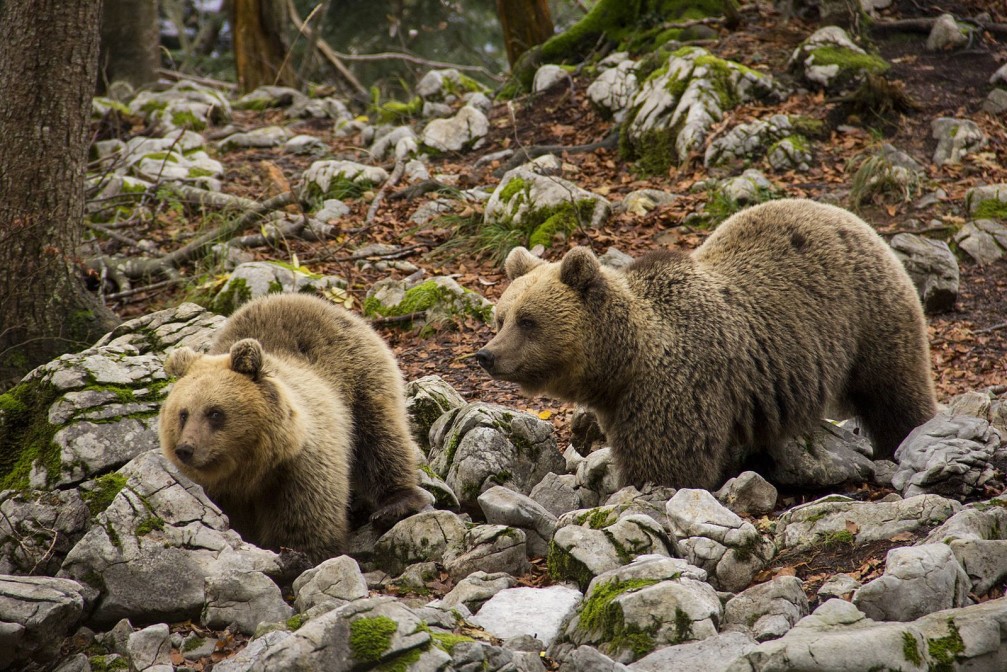
Slovenia is home to a stable population of 300-450 brown bears (scientific name: Ursus arctos; Slovene: Rjavi medved), occupying a range of about 5000 square kilometres, predominantly in the forested Kocevje region along the border with Croatia. It’s not unusual to encounter a brown bear in Slovenian forests, sometimes they come even into villages and towns. The brown bears are scavenger and omnivore animals, but the bears of the Kocevje region are prided on being circumspect creatures, afraid of humans.
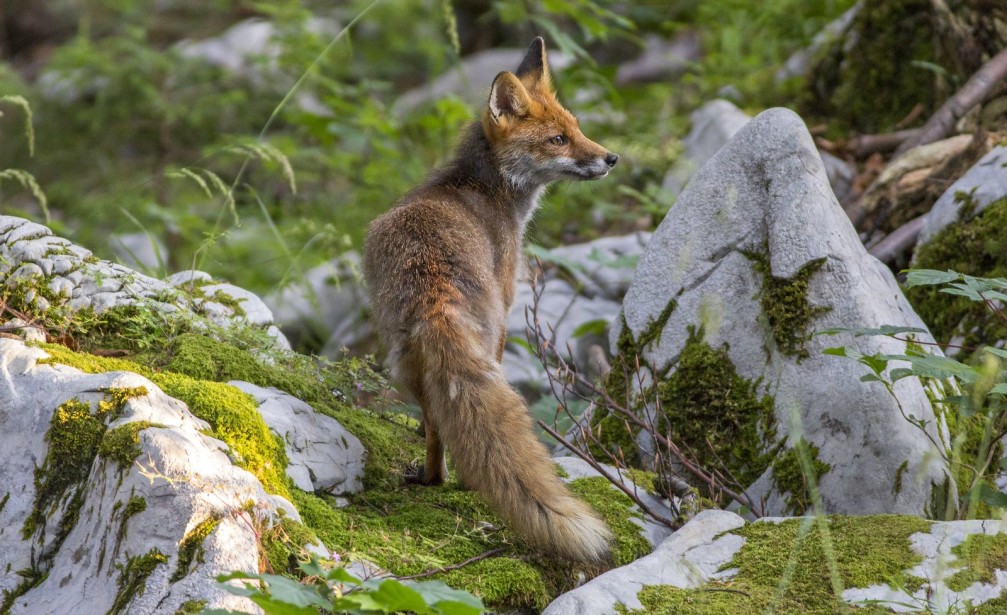
Red foxes (scientific name: Vulpes vulpes; Slovene: Navadna lisica or Rdeča lisica) are one of the most ubiquitous of all mammals, occurring throughout most of Europe, including Slovenia, and Asia and in parts of Africa and the Middle East. They have orangish-red fur on their backs, sides and head and white fur under their necks and on their chests. They have a long bushy tail, pointed black ears and black legs and feet.
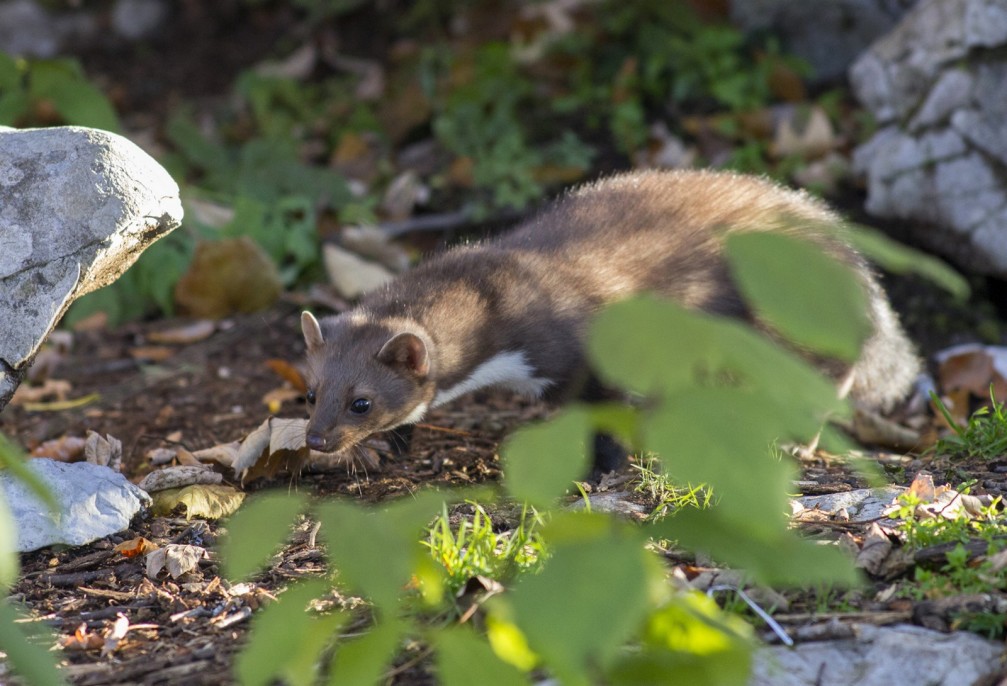
Beech Martens (scientific name: Martes foina; Slovene: Kuna belica) are found in open deciduous forest and rock outcroppings in mountainous habitats throughout Europe, including Slovenia, and in western and central Asia. They range in coloration from dark brown to pale grayish brown. A white or buffy streak can be seen just below the chin running down the neck to the chest. Beech Martens are frequently found living near human habitation where they make dens in buildings. Natural den sites include abandoned burrows, hollow trees, and rocky crevices.
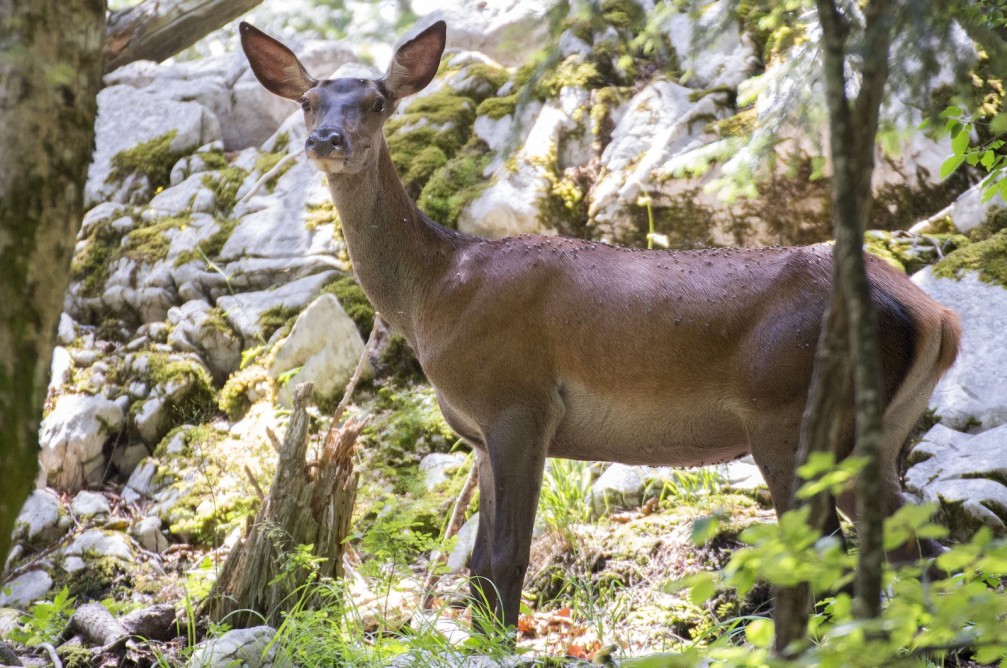
Red deer (scientific name: Cervus elaphus; Slovene: Košuta) are the largest of the Slovenia’s resident deer species (it stands about 1.2 metres tall at the shoulder). Their impressive autumnal breeding season, known as the ‘rut’, is one of the top Slovenian wildlife spectacles, particularly familiar in the Slovenian Alps, where red deer are widespread and common. During the rut, mature stags invest much time and effort into competing with other males (harts) for access to females (hinds). Its coat is reddish brown, darkening to grayish brown in winter, with lighter underparts and a pale tail. Most males are 10 percent larger than females (on the picture) and may weigh twice as much.
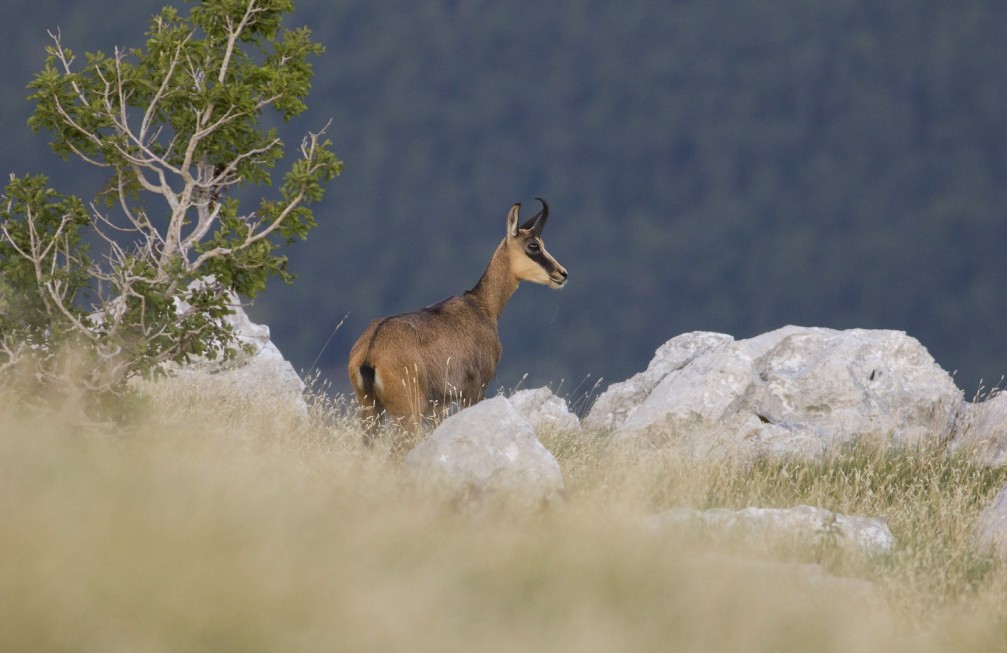
The chamois (scientific name: Rupicapra rupicapra; Slovene: Gams) is a large sized mountain goat, native to the European mountains, including the Slovenian Alps. The chamois has short horns, that curve backwards on both the male chamois and the female chamois (on the picture). The fur of the chamois is thick to keep it warm in the alpine winters, and turns from a deep brown color in the summer to a grey color in the winter. It has a black stripe that runs along it’s back from neck to rump. The male chamois is generally a very solitary animal and spends most of the year grazing alone. The female chamois however, live in herds with other females and their young.
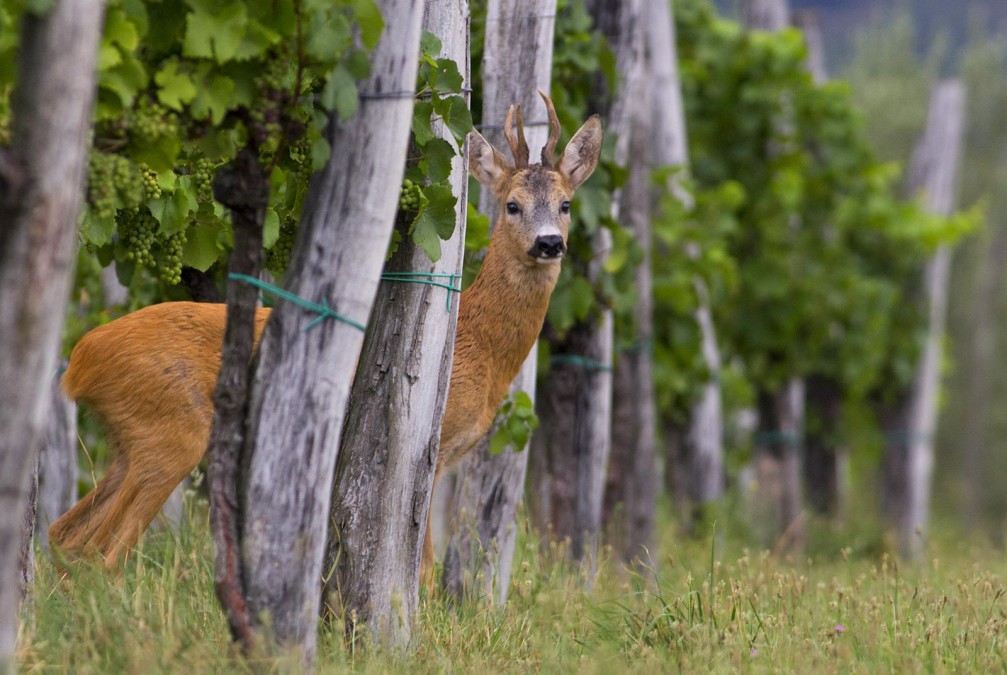
The European roe deer (scientific name: Capreolus capreolus; Slovene: Srnjak), also known as the western roe deer, are one of Slovenia’s native deer species and have become the most widespread. Unlike other deer, they do not live in herds, but are most often seen as solitary individuals or as a family group of a mother and her offspring. It is reddish brown in color during summer but becomes grey, pale brown or even black in winter. The tail is very small and there is a large white rump patch, which becomes less obvious during winter. Males (on the picture) are larger than females and have short antlers, usually with three points. Young roe deer have spotted coats for the first six weeks of life. Bambi the deer, from the children’s books by Felix Salten, was a roe deer.
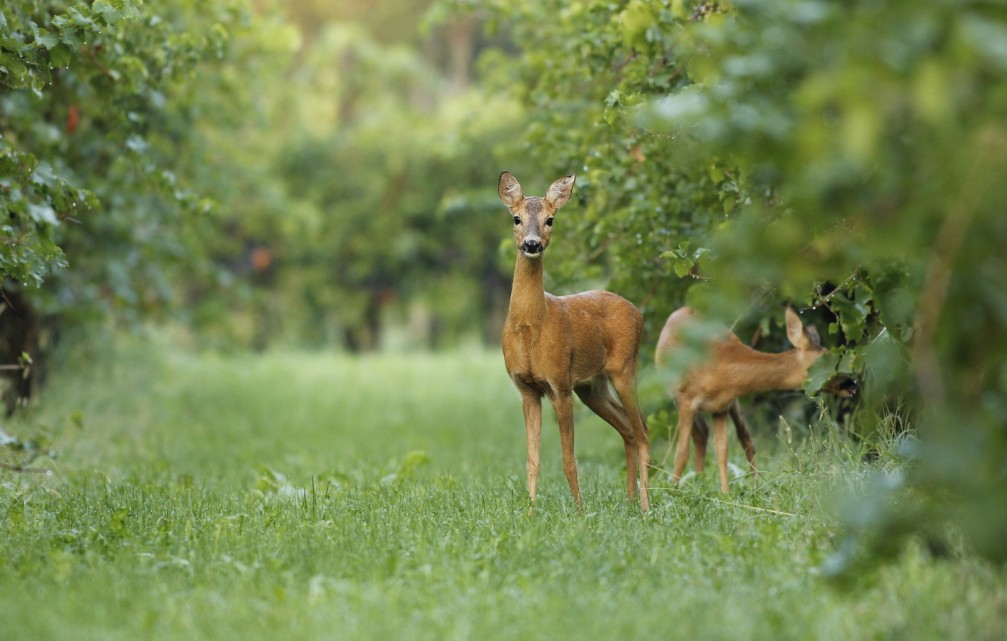
Two female roe deer fawns (Capreolus capreolus; Slovene: Srna), one standing alert, the other one reaching to eat leaves.
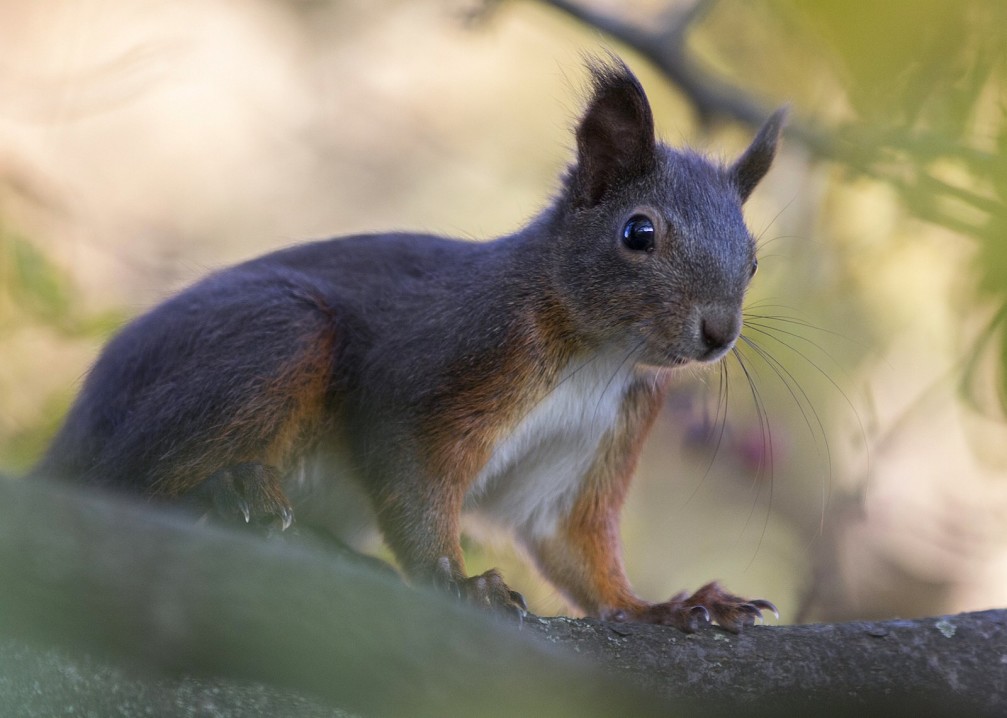
Squirrels (scientific name: Sciuridae; Slovene: Veverica) are small rodents generally between 10 cm and 20 cm tall and are very common throughout most of Slovenia. They are characterized by their long bodies, soft fine hair (although some have very thick hair), and large eyes. Squirrels often store or bury seeds and nuts for the winter. This makes them important seed dispersers, since not all of them survive to return to their cache.
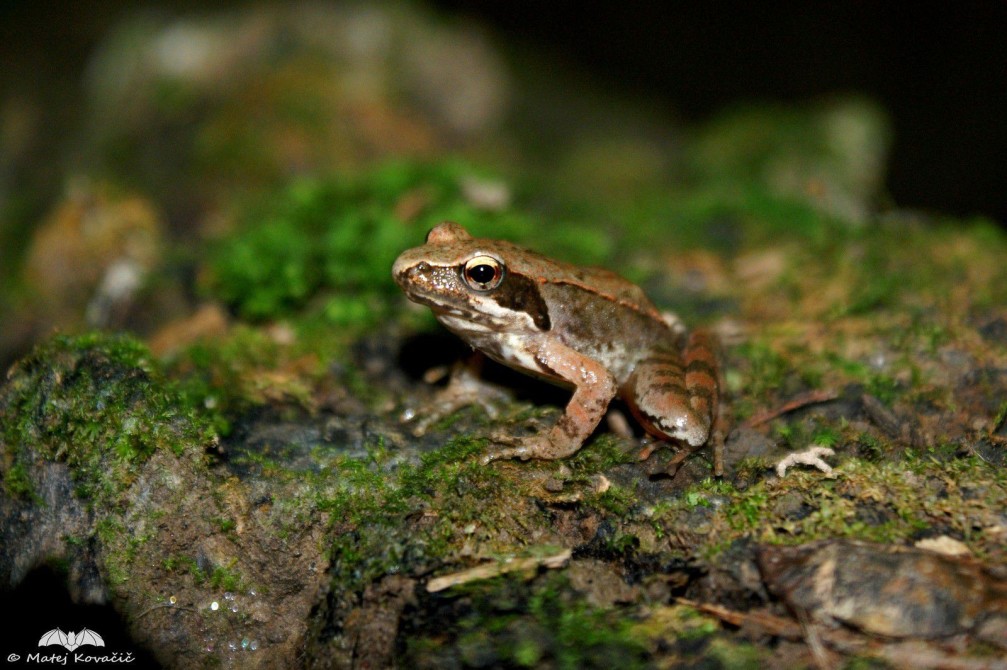
The Italian agile frog (scientific name: Rana latastei; Slovene: Laška žaba) is a brown frog that is a poorly known representative of Slovenia’s amphibian fauna. It is endemic to the plains of northern Italy, the extreme southern tip of Switzerland, central and northern Istria in Croatia and southwestern Slovenia. It’s one of the most endangered species of European amphibians. The coloration of Rana latastei is typical for the European brown frogs, from brown to reddish basic body color, with white-yellow belly, and a characteristic dark mask on the sides of the head. With its powerful hind legs, it is able to jump more than a meter.
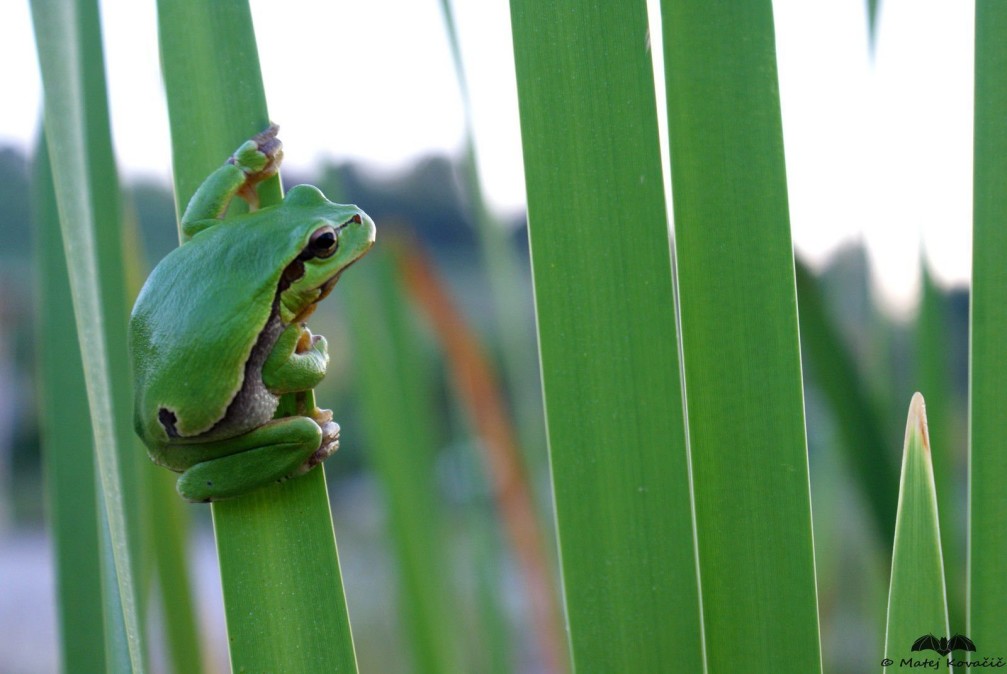
Hyla arborea, the European tree frog (Slovene: Zelena rega) is an elegant slim frog with very long and slim hind legs and a body length of 3 to 4 centimetres. The skin is very smooth. Green with an uninterrupted dorsolateral black line bordered with white from the nose down on both sides. Hyla originates from the Greek meaning ‘to bark’ and this species indeed has a loud bark-like call. Arborea comes from the Latin and means ‘of the trees’, pointing to the arboreal way of living. At the beginning of the year, European tree frogs tend to be darker due to their need to heat up faster.
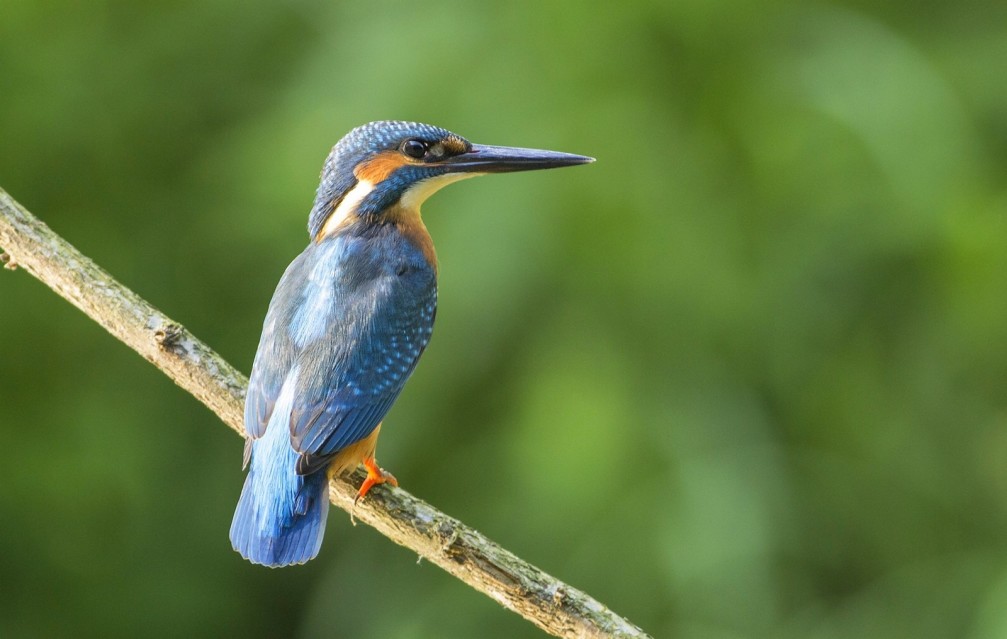
The not-so-common Common Kingfisher (scientific name: Alcedo atthis; Slovene: Vodomec) is no larger than a sparrow, with an average length of around 19 centimetres. This bird has a short tail, large head in profile, and a long, sturdy bill. The upper parts of the bird is mostly bright metallic blue, including the head. The back is cobalt, the plumage below is orange. In Slovenia they inhabit clear, slow-flowing streams, rivers, and lakes which are surrounded by copious amounts of vegetation. They are well known for plunging into the water to catch their prey.
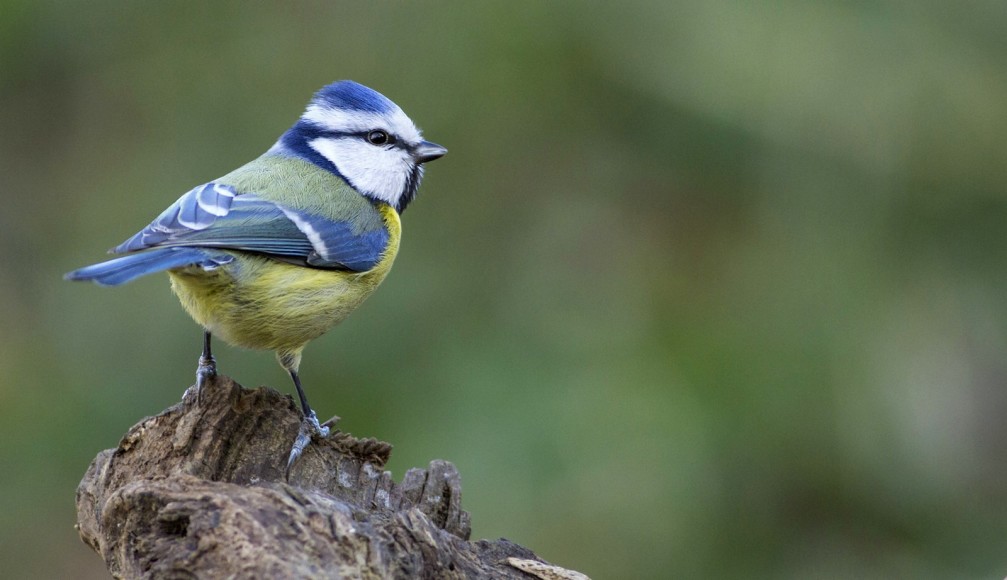
Eurasian blue tit (scientific name: Cyanistes caeruleus; Slovene: Plavček), also known as the blue titmouse, is easily recognisable by its blue and yellow plumage. The bird has an azure blue crown and dark blue line passing through the eye, and encircling the white cheeks to the chin, giving the bird a very distinctive appearance. The forehead and a bar on the wing are white. The nape, wings and tail are blue and the back is yellowish green. They usually nest in tree holes, although they easily adapt to nest boxes where necessary. They prefer insects and spiders for their diet. The birds are famed for their skill, as they can cling to the outermost branches and hang upside down when looking for food.
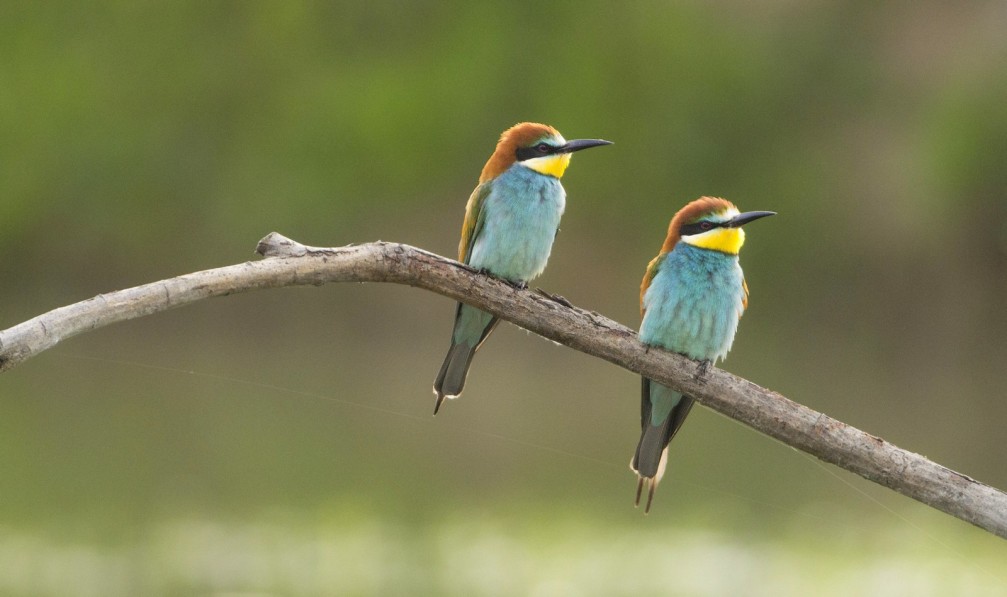
The slender European Bee-eaters (scientific name: Merops apiaster; Slovene: Čebelar or Legat) measure between 25 and 29 centimetres in length. The plumage above is brown and yellow and the rump is straw-colored. The wings and the long upper tail feathers are green. The plumage below is greenish-blue. The beak is black. The chin stretching to the ears is bright yellow, bordered below black. The eyes are reddish with a blackish, thick line through them. Males and females look alike, except the female’s back tends to be greener than the male’s. As is suggested by its name, the European Bee-eater predominantly eats flying insects – particularly bees, wasps and hornets, but also dragonflies and other larger insects. They tend to be shy and generally avoid humans. However, after rain in particular, they may be found close to human settlements in their search for beehives.
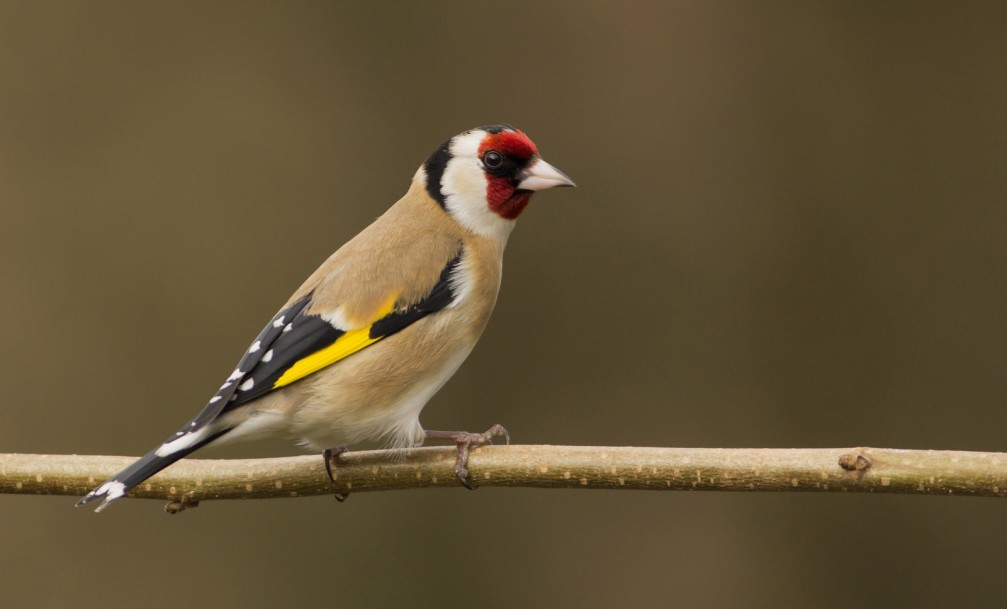
European Goldfinches (scientific name: Carduelis carduelis; Slovene: Lišček) are a group of colourful and attractive little birds in the finch family. These common garden and countryside birds have a very pointed beak, specialised for eating seeds. The back of head and nape of neck are black; the forehead and throat are red; the cheeks, lower neck, and underside are white; the back is a deep chestnut brown; the wings are black with yellow markings; and the tail is black and white.
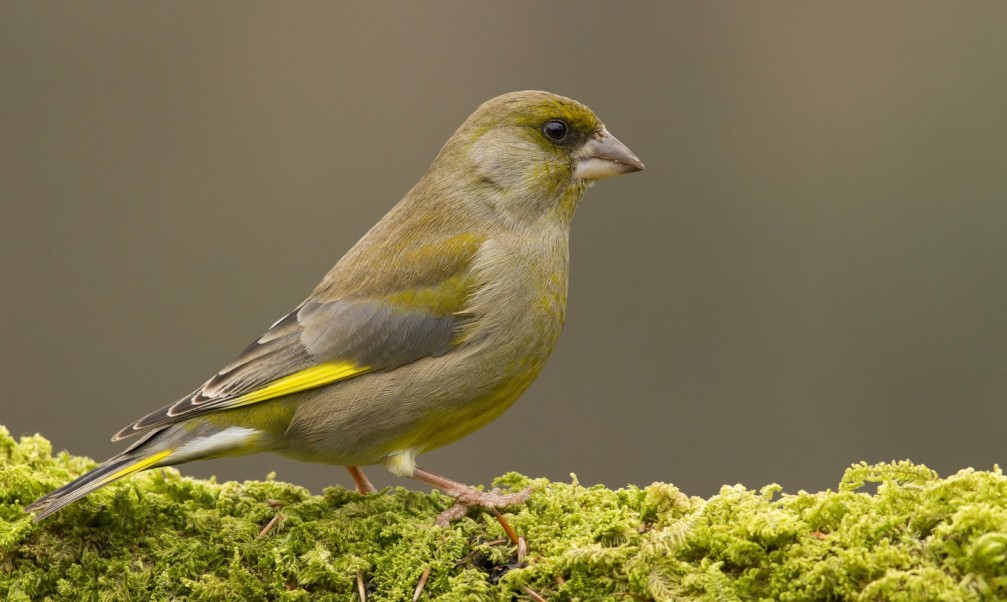
The greenfinch (scientific name: Carduelis chloris; Slovene: Zelenec) is widespread and common throughout Slovenia. It is a well-known bird as it often visits gardens and drives other birds away from feeders. It’s a relatively heavy looking bird, with a chunky powerful bill which is used to break open seeds. This bird can be recognised by the yellow outer-most wing feathers which are visible when the bird is perching, the yellow flashes on the tail, seen easily when the bird is in flight, and the greenish underparts. Males have a yellowish-green breast and are much more yellow than the duller greyish female.
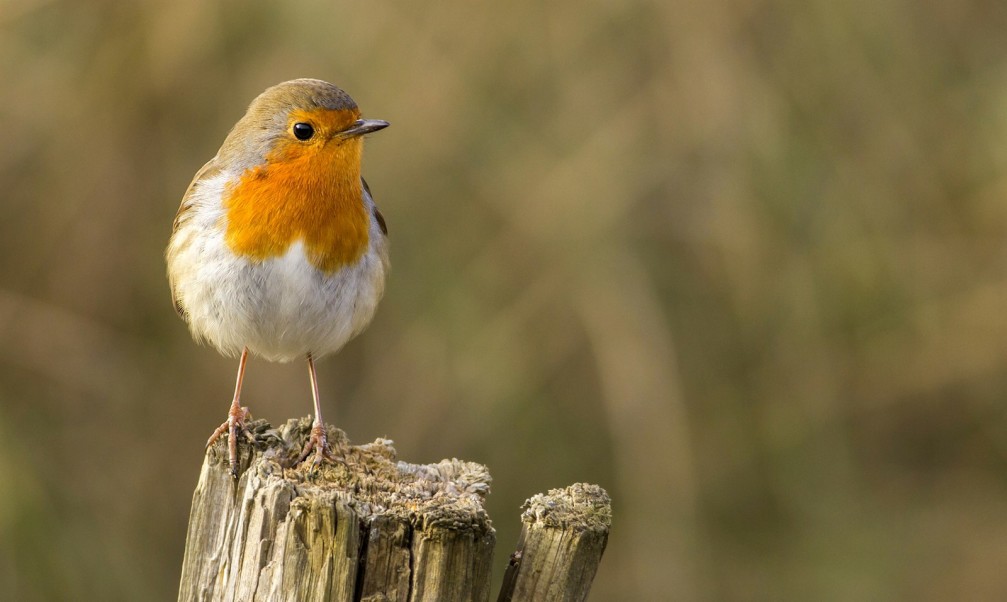
Instantly recognisable due to its rusty-red breast, the European robin (scientific name: Erithacus rubecula; Slovene: Taščica) is a songbird of 14 cm length. They sing nearly all year round and is one of the few birds in Slovenia which can be heard singing throughout the winter. Males and females look identical. They feed predominantly on insects, spiders and other arthropods. The bird is known for nesting in some bizarre places, including old teapots and coat pockets. A study found that female robins can make vocal calls containing fertility and location information. These calls are begs for food which apparently forces their paired male to be attentive or risk losing paternity. Despite their cute appearance, they are aggressively territorial at all times – if you come across a bird’s nest do not try and move it. Birds are very sensitive to any disturbance during nest building and egg laying and will easily desert the nest if they think it has been discovered.
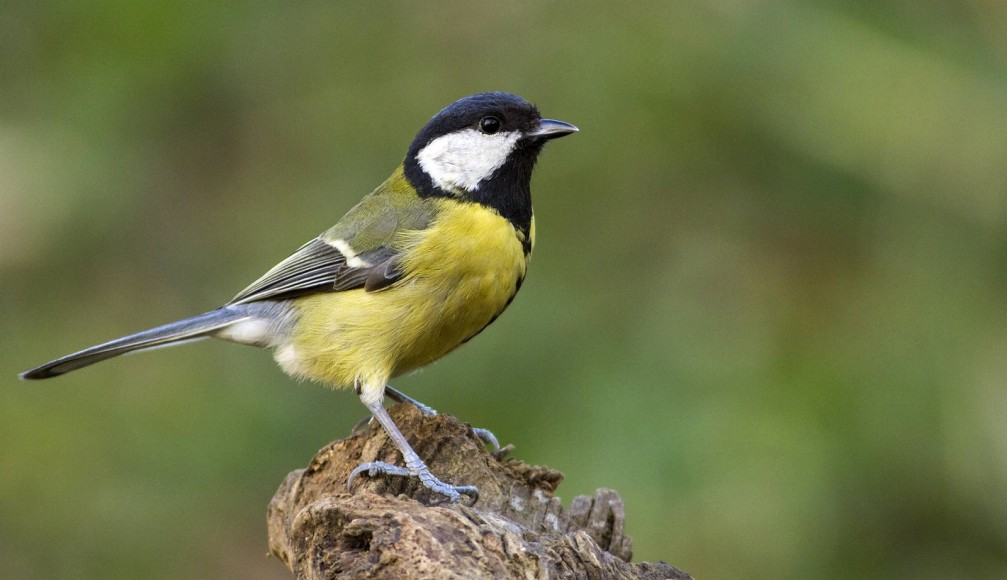
The great tit (scientific name: Parus major; Slovene: Velika sinica) is the largest tit in Slovenia – green and yellow with a striking glossy black head with white cheeks and a distinctive two-syllable song. It’s a woodland bird which has readily adapted to man-made habitats to become a familiar garden visitor. It can be quite aggressive at a birdtable, fighting off smaller tits. It is found throughout Slovenia where it remains throughout the year – in winter it joins with blue tits and others to form roaming flocks which scour gardens and countryside for food.
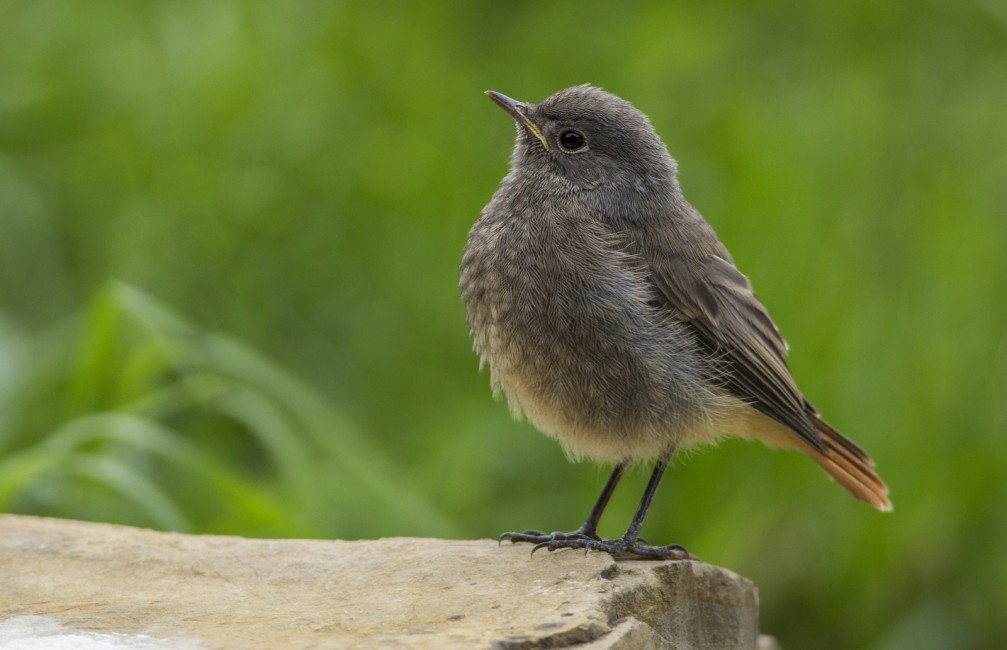
The black redstart (scientific name: Phoenicurus ochruros; Slovene: Šmarnica) is a small bird which feeds mainly on insects and larvae. The female black redstart (on the photo) is duller than the male and has more uniform smoky grey-brown plumage, except for darker markings on the wings and slight dark streaking on the breast. The underparts are buff to orange-buff on the vent and under-tail coverts, and the tail is similar to that of the male, with orange-red outer tail feathers and black central feathers.
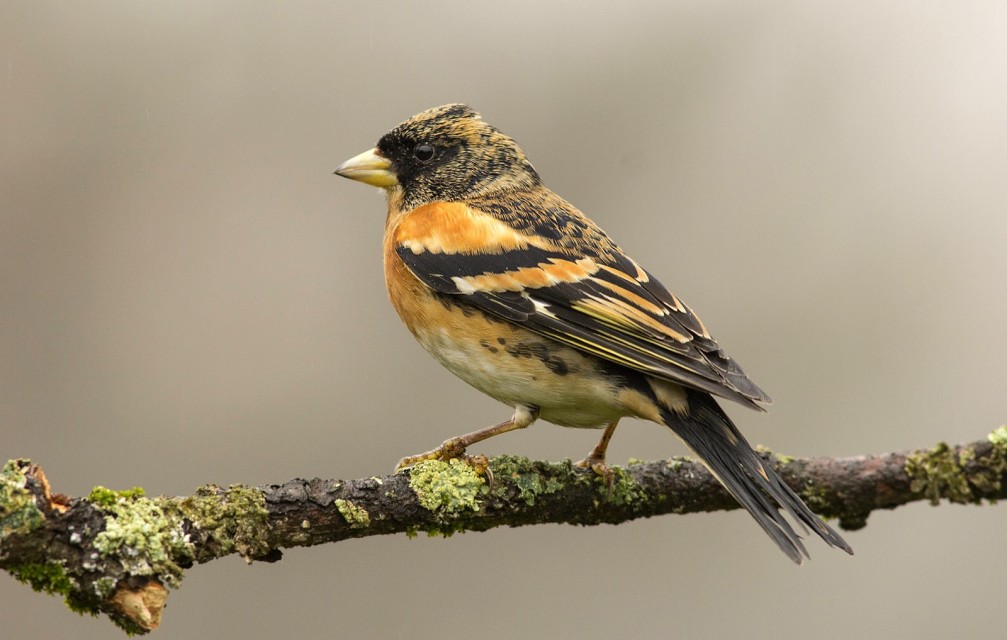
The brambling (scientific name: Fringilla montifringilla; Slovene: Pinoža) is a medium-sized bird with attractive orange plumage on the breast and shoulders. It feeds mainly on seeds and fruits, but also takes small invertebrates and larvae.
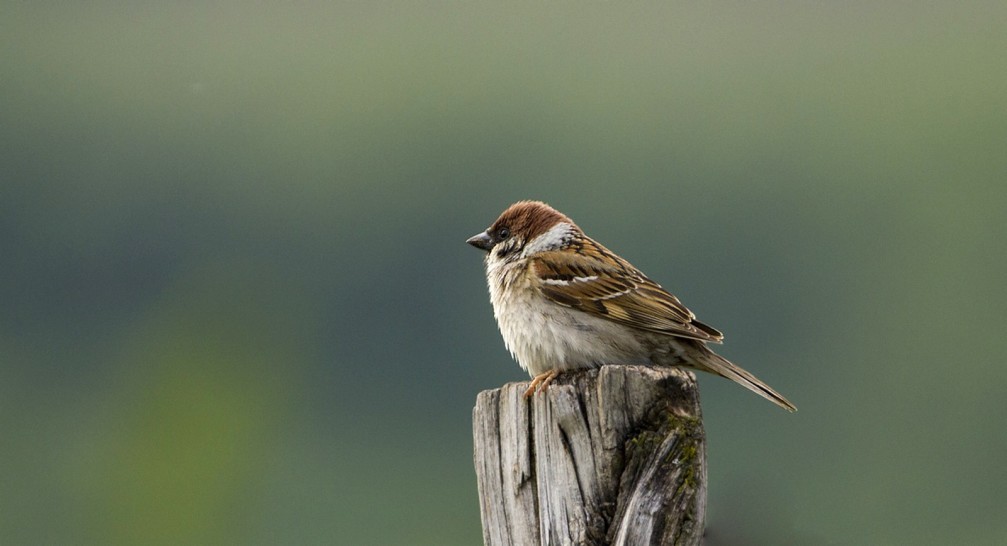
Similar to the house sparrow (scientific name: Passer domesticus; Slovene: Domači vrabec), the Eurasian tree sparrow (scientific name: Passer montanus; Slovene: Poljski vrabec) was not recognised as a separate species until the early 18th century. Both sexes are similar, with a rich chestnut-brown head and nape, a clear black spot on white cheeks, and a white collar. The voice consists of various chirps and cheeps, which are of a higher pitch than those of the house sparrow. The tree sparrow has a broad geographical range, and is also found throughout most of Slovenia, where it inhabits open farmland with plenty of hedgerows, trees or small woodland patches. They feed mainly on plant matter, including seeds, buds, shoots, berries and flowers. When available they also take invertebrates such as grasshoppers, beetles and spiders.
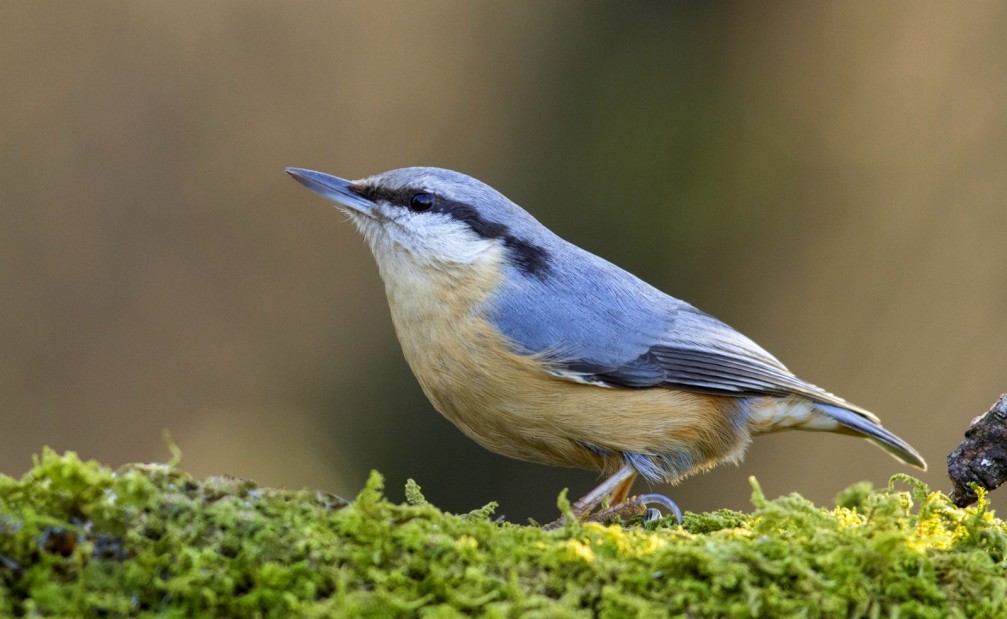
The Eurasian Nuthatch (scientific name: Sitta europaea; Slovene: Brglez) is a small bird found throughout most of Slovenia. It is blue grey on the head, forehead and crown. We can see a conspicuous black eye stripe from the upper base of the bill, extending through the eye and behind until the nape sides. Cheeks and chin are whitish. It is a very vocal bird with a repeated loud dwip call.
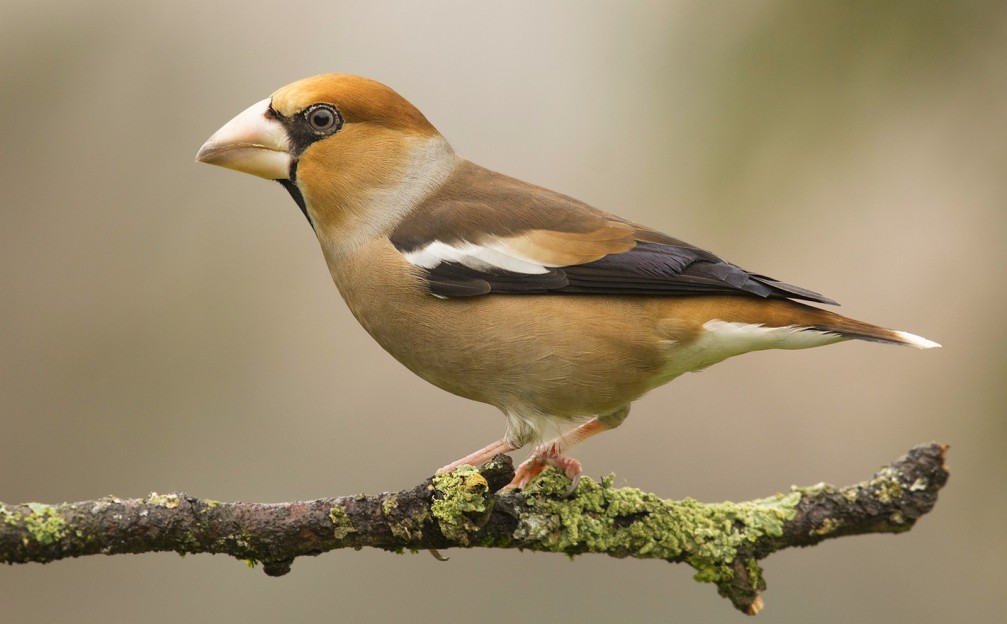
The Hawfinch (scientific name: Coccothraustes coccothraustes; Slovene: Dlesk) is Slovenia’s largest finch. Always shy and difficult to see, the hawfinch has become even more enigmatic in recent years with a decline in some of its traditional breeding areas. Numbers are hard to determine, however, as hawfinches are easily overlooked, especially in summer. They are thickset, short-necked birds with large heads and long tails. Their most striking features are a massive, powerful triangle-shaped beak and prominent black and white wing and tail markings. They have reddish grey underparts with a black bib and a white vent. Their dark wings have white and rust-colored shoulder patches and a white wing bar nearer the wingtip.
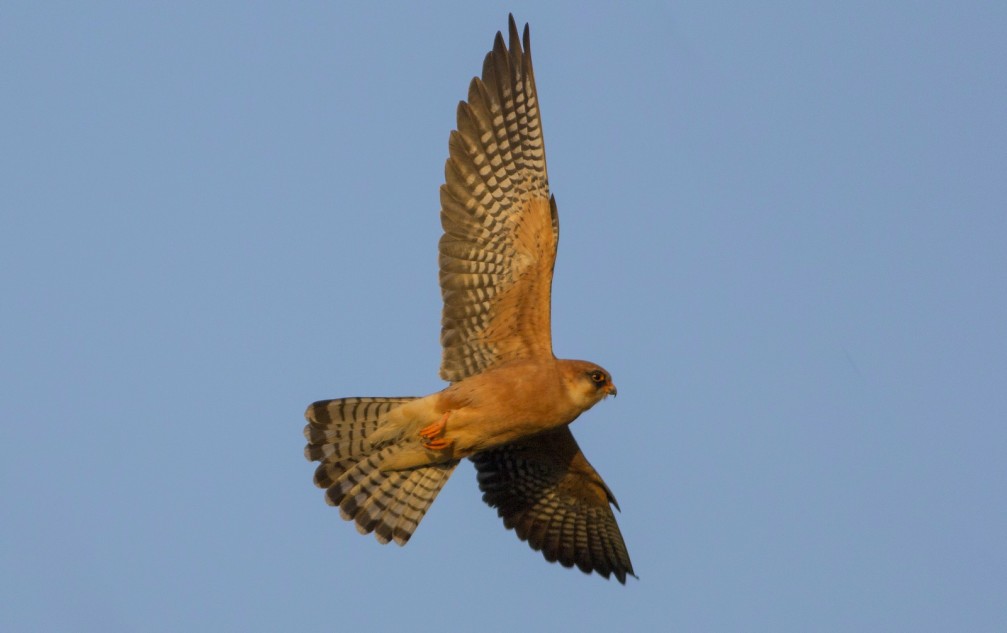
Red-footed Falcons (scientific name: Falco vespertinus; Slovene: Rdečenoga postovka) are 28-34 centimetres in length with a wingspan of 65-75 centimetres. Mature males are bluish grey with red legs and red plumage around their legs, females have yellowish under parts and bluish grey upper parts. The wings are long and pointed and used almost continuously during flight. The bill is short, powerful, and with a distinct tooth on each side. The bird feeds mostly on insects, but also takes small vertebrates, including amphibians, reptiles, and mammals.
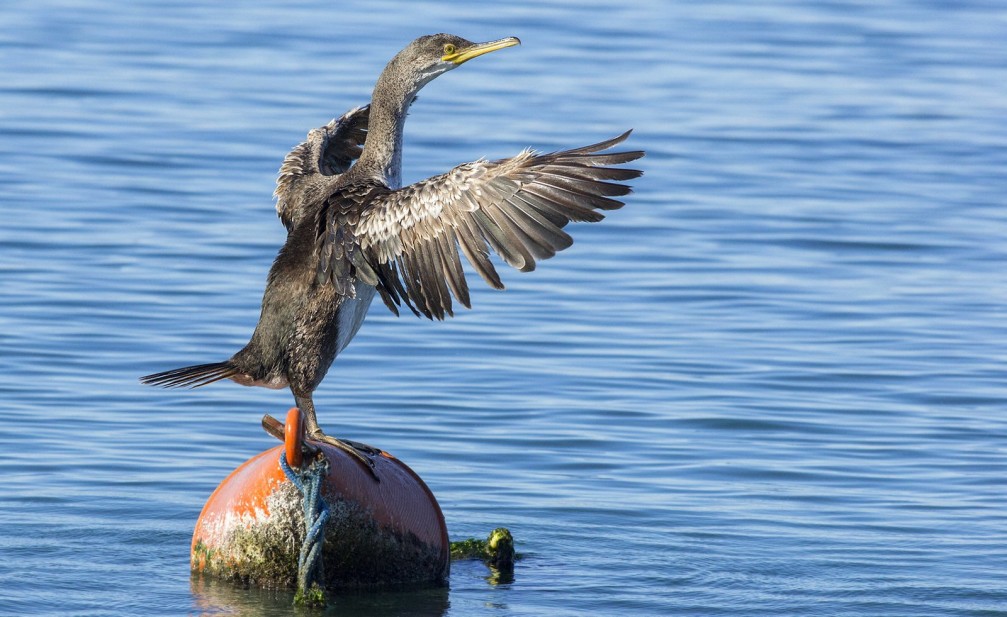
The Mediterranean Shag (scientific name: Phalacrocorax aristotelis desmarestii; Slovene: Sredozemski vranjek) with its dark, sleek appearance and distinguishing tuft of crown feathers which it sports during its winter breeding season is an endearing but reclusive coastal seabird. It is one of three subspecies of the European shag (Phalacrocorax aristotelis). It is a medium to large size seabird, measuring approximately 70-80 centimetres in length with an expansive 95-110 centimetre wingspan. The Mediterranean Shags are usually never far from land and may be observed roosting on isolated rocks and boulders or along the shore of an isolated part of the coast. They can also be seen swimming and diving along the coast, often alone and away from human activities.
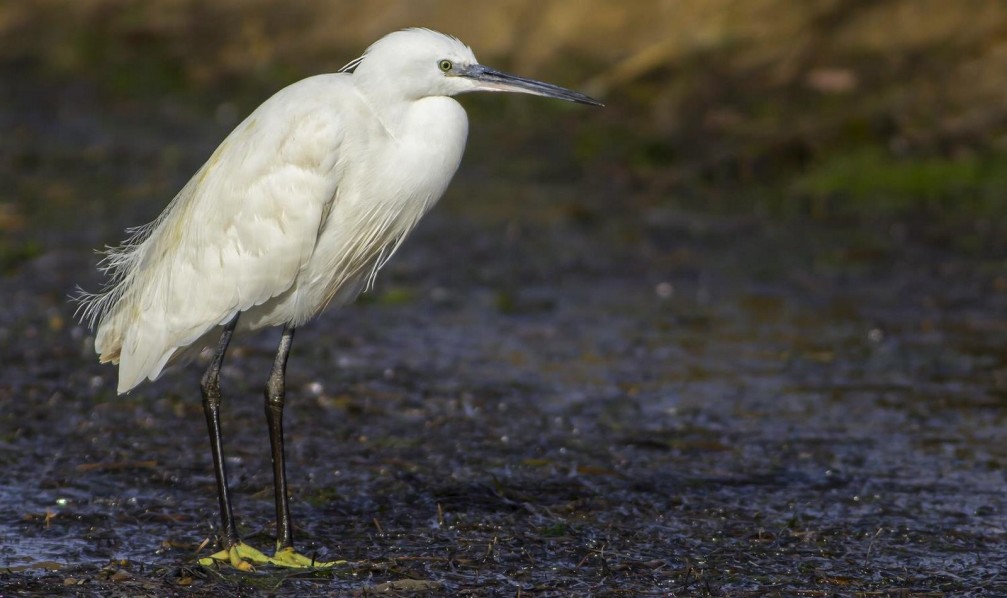
The little egret (scientific name: Egretta garzetta; Slovene: Mala bela čaplja) is a striking and elegant member of the heron family which can be identified by its pure white feathers, elongated sinuous neck, long black legs and dark stabbing bill. It is never far from water and is usually found in large wetland areas, typically on mudflats and marshland. It is an opportunistic hunter, feeding mainly during the day whilst walking through shallow, open water, stabbing prey with its bill. It feeds primarily on small fish, which are around 1 to 6 centimetres in length. It nests in bushes, trees, marshes, swamps, dry open country, woods and on sea cliffs.
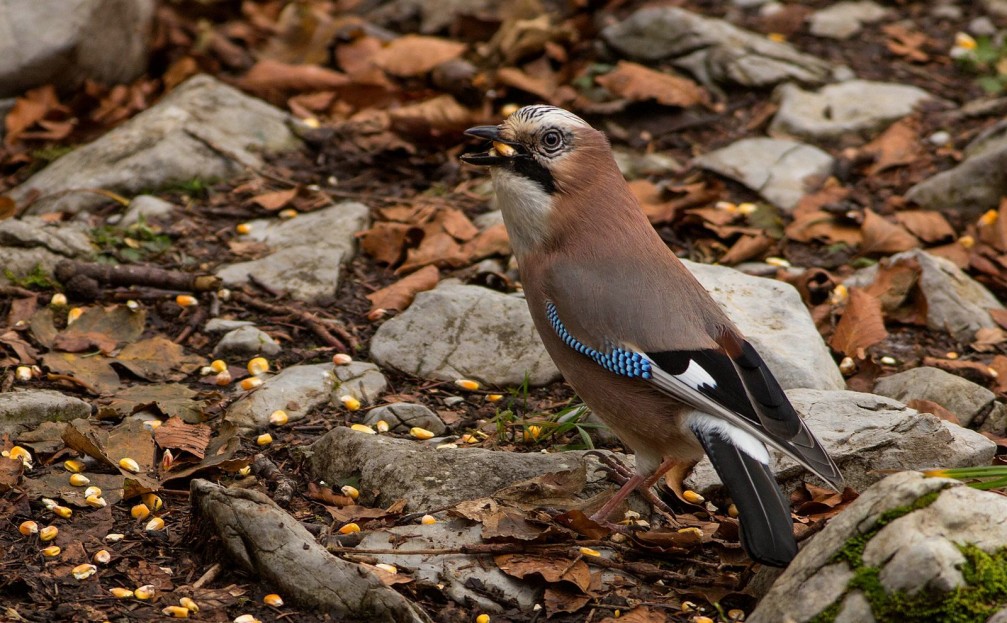
Jays (scientific name: Garrulus glandarius; Slovene: Šoja) are shy but strikingly coloured members of the crow family, found throughout Slovenia. They are generally pinkish-brown in color, with a black tail, whitish throat and rump patch and a blue patch on the wings, barred with black. When threatened by hawks, they produce a very loud scream, which serves as an alarm call, so it’s no wonder that in Slovenia the bird is known as ‘the screamer of the woods’.
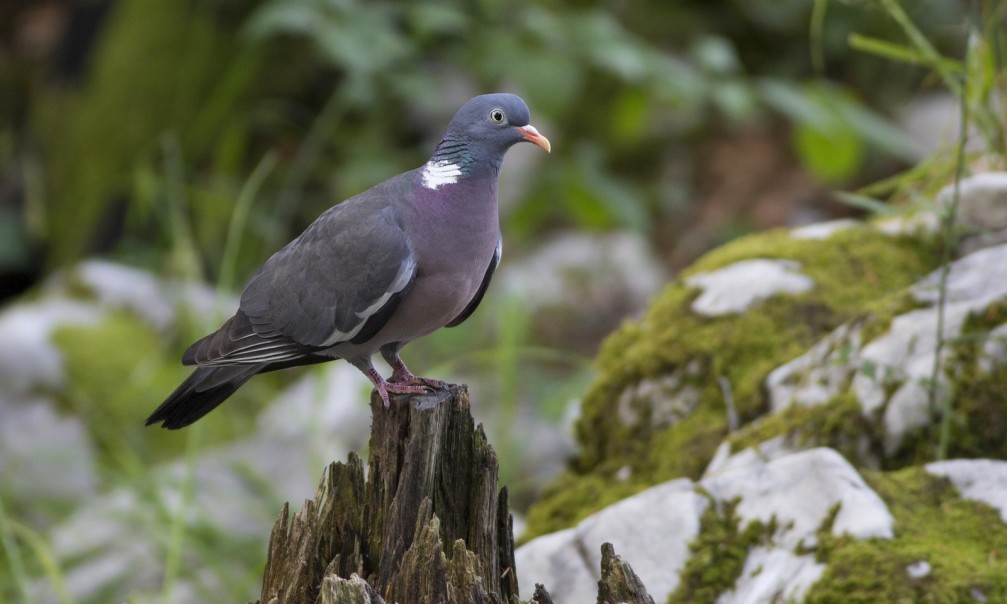
The common wood pigeon (scientific name: Columba palumbus; Slovene: Golob grivar) is the largest and most common of Slovenia’s doves and pigeons. It is grey in colour with a dusky pink breast and a white neck patch. It can be found almost everywhere in Slovenia – in woodlands, hedgerows, parks, and gardens, and even in city centres. It produces a husky hooh-hrooo call during the breeding season. It feeds on grains, fruits, seeds, peas and beans, and root crops.
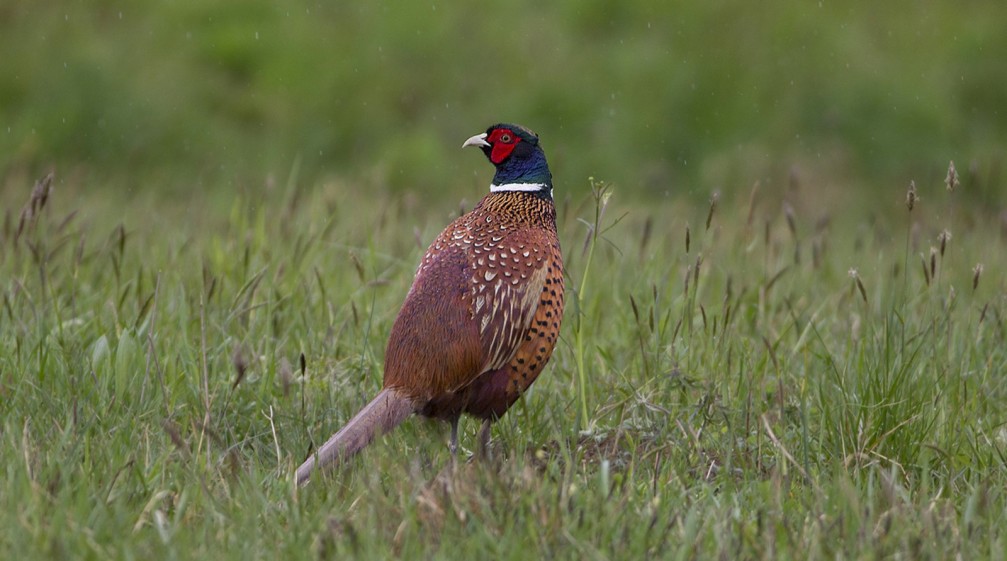
The ring-necked pheasant (scientific name: Phasianus colchicus; Slovene: Fazan) is a large, chicken-like bird. Mature males are attractive and unmistakable, with a long tail, bright red wattles around the eyes, a chestnut coloured body, and an iridescent green or bluish head, which is separated from the body by a white collar. They have a broad diet, incorporating seeds, roots, berries, leaves, and insects. They prefer wooded agricultural lowland, but can also be found in gardens, parks and marshes.
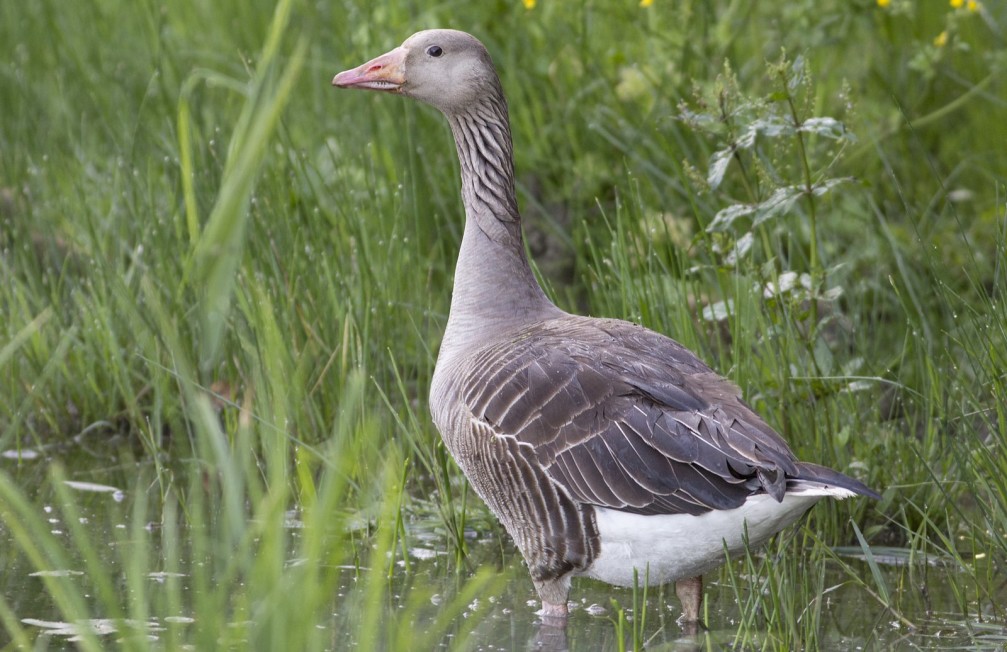
If you see a wild grey goose in Slovenia, it will almost certainly be the greylag goose (scientific name: Anser anser; Slovene: Siva gos). It is a big bird with broad wings, and looks heavy in flight. From a distance, the birds appear a uniform grey-brown but a closer view reveals more subtle tones of brown and grey. The birds also have barring on back, breast and neck. The underside of the tail is white.
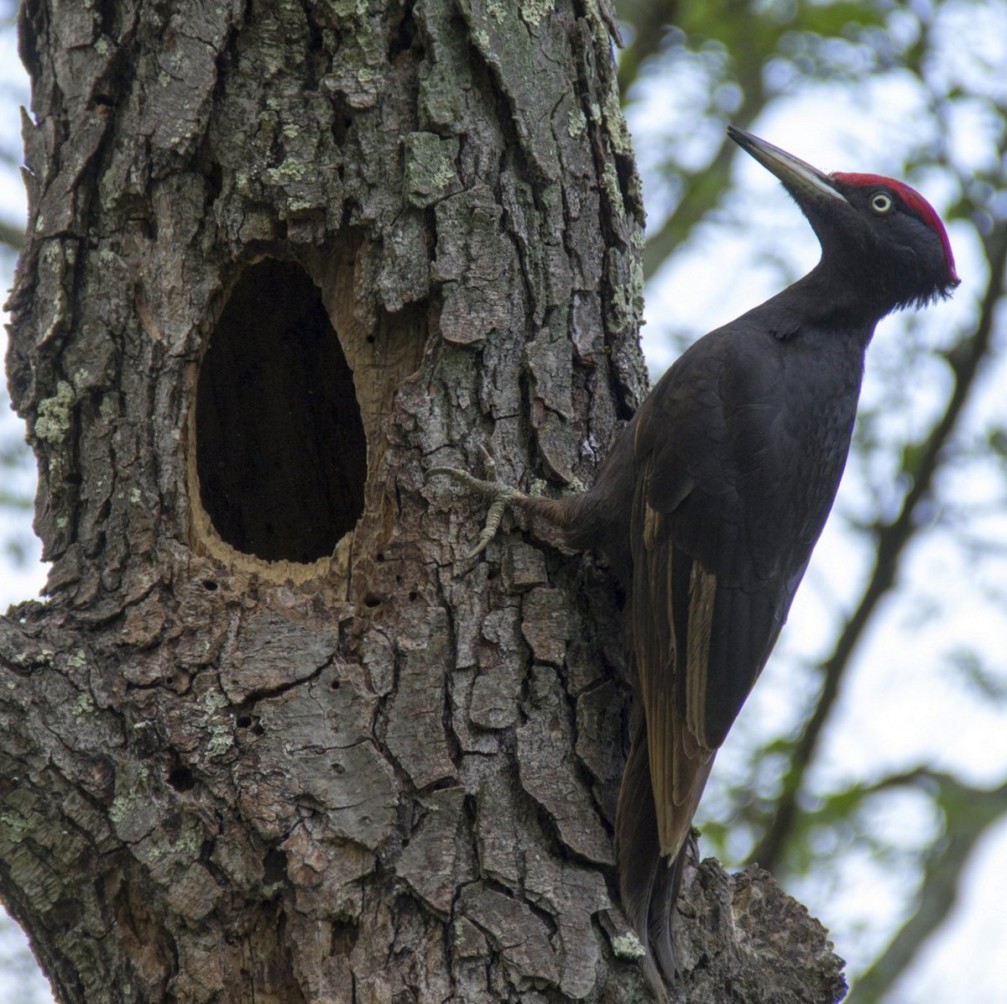
The largest woodpecker in Slovenia, the black woodpecker (scientific name: Dryocopus martius; Slovene: Črna žolna) is distinguished by its distinctively black plumage, which is glossy black throughout, with the exception of a crimson-red crown. It has a large chisel-like bill which makes it an expert excavator. It can be heard vigorously drumming on wood in long, loud bursts while trying to find a suitable site for excavation, producing a loud and powerful sound reminiscent of machine gun fire. The black woodpecker favors tall trunks of climax forest, especially of mixed beech and fir, or of pure beech and feeds on larvae, pupae, and adults of ants and wood-boring beetles.
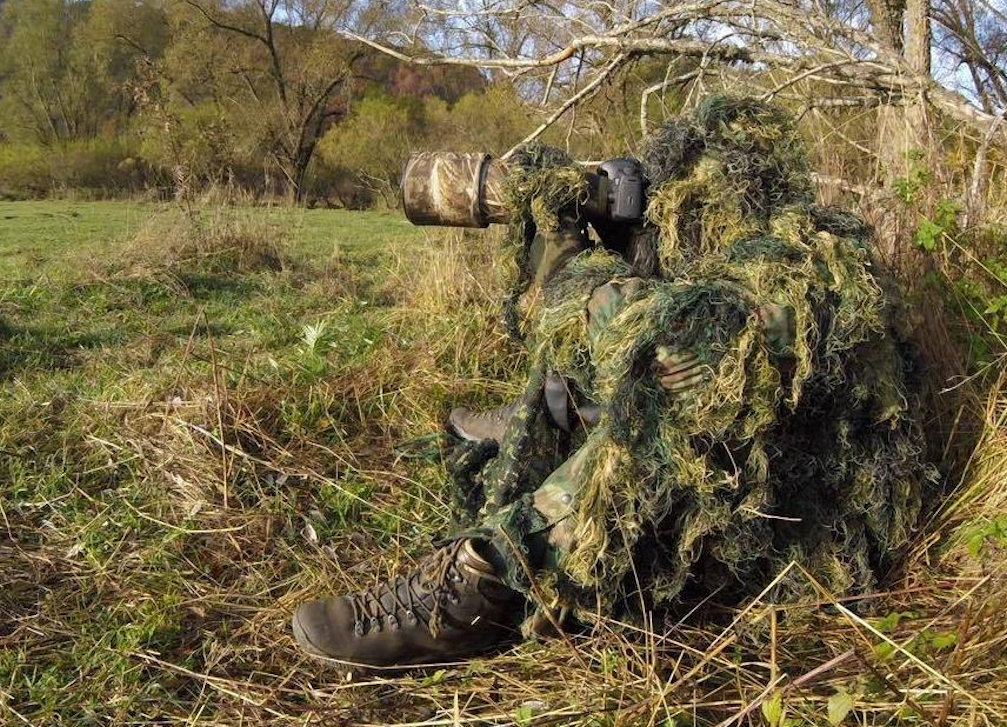
Thank you so much Matej Kovacic for your kindness and for sharing all these beautiful wildlife and bird photos with us. You do a fantastic job and your photos are remarkable!
| |
|---|
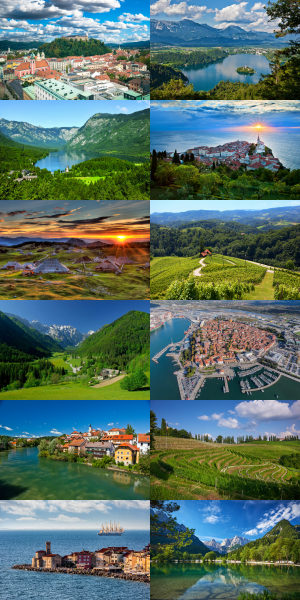 Discover beautiful Slovenia through amazing photos that will instantly make you want to visit and explore this delightful country in the heart of Europe. View more than 100 galleries with more than 5.500 landscape and nature photos from 50+ photographers! ENJOY! |
| |
|---|
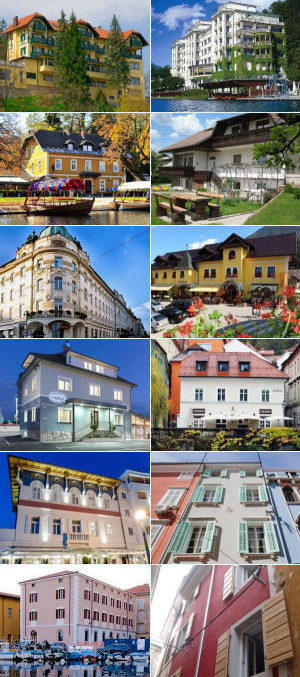 There is a wide array of options for accommodations in Slovenia, including hotels, guest houses, apartments, bed and breakfasts, hostels, camping and glamping sites and farm stays. Find out which places to stay in Slovenia we recommend and why! |


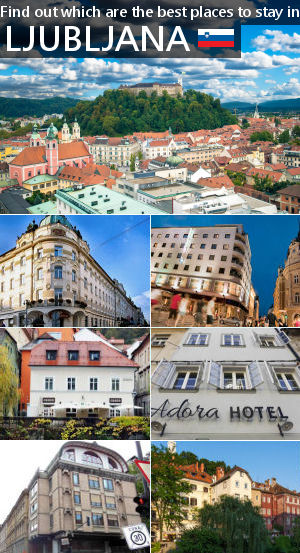
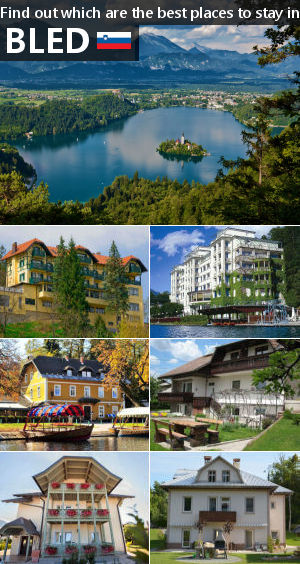
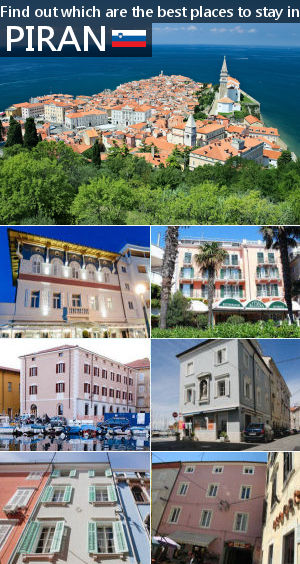

Absolutely beautiful photographs, and the love of your chosen field shows. THANK YOU…..
Gorgeous photos. Bee-eaters are so cute..
Ursus arctos! Wow. Such a beautiful animal.. I love how close you can get..
WOW! I totally love the photos – my favorite one is the last black woodpecker photo
A very inspiring gallery. I particularly like the Chamois and the Kingfisher.
I fell in love with this fantastic photo gallery. Thanks for sharing such a beautiful work.
Really enjoyed these wildlife and bird shots, wonderful!
Čudovito Slovenija je res lepa dežela. Zelo dobro bi bilo, če bi dodali še slovenska imena za živali.
Dodano!
Love the pictures, simply superb. It must be an amazing sight and real privilege to be this close to such striking animals in a beautiful setting!
Delila naprej, ker so fotke res noro lepe.
Really beautiful work. It seems so incredible to me to see brown bears on the ground like that. It must have been a remarkable experience! So glad I came across these lovely photographs.
Absolutely wonderful work! Thank you so much for sharing these amazing photos. Very interesting.